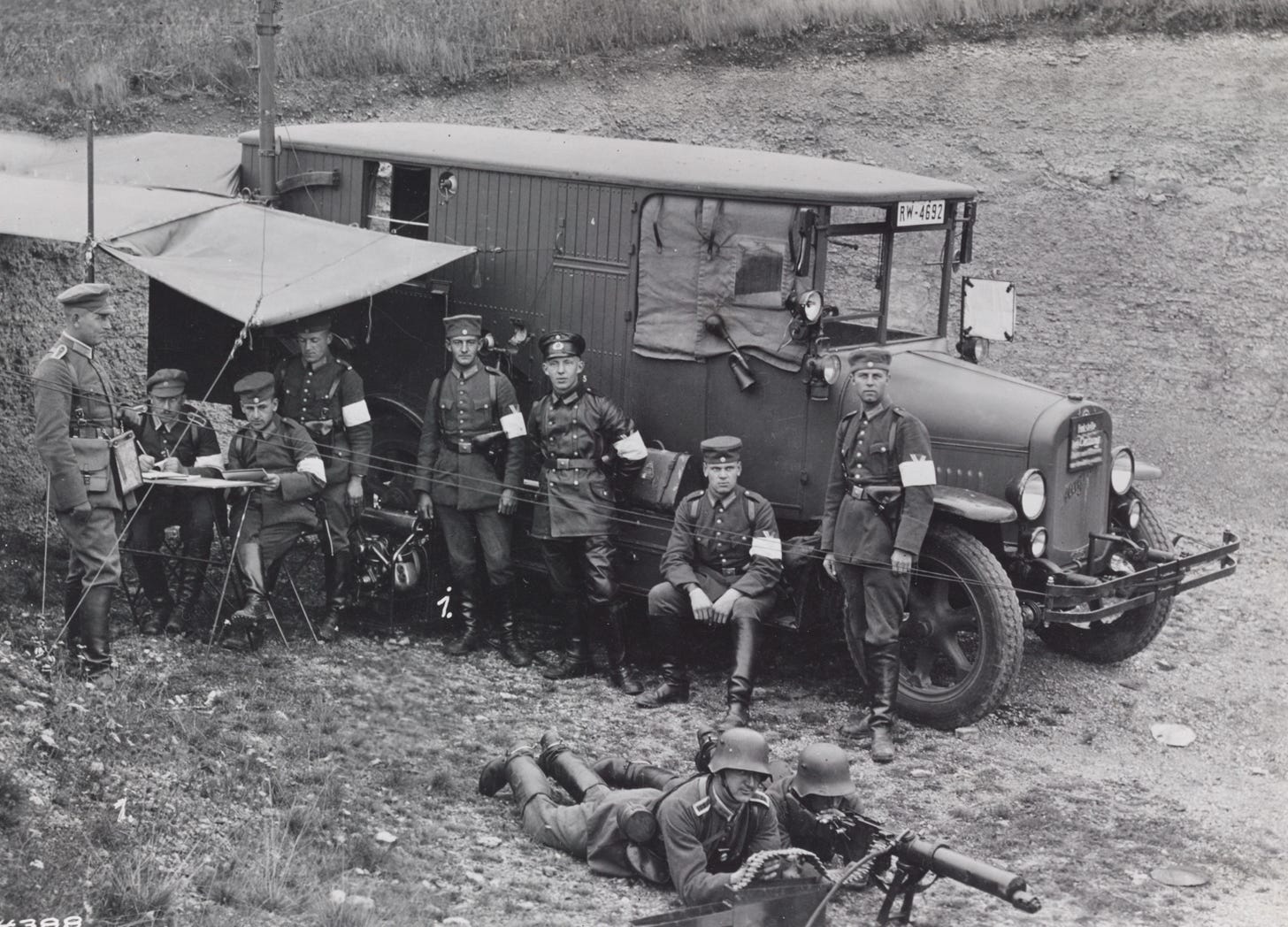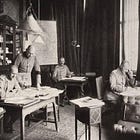The Division Command Post (Ia)
As seen by an American officer at the Kriegsakademie (1938)
On the eve of the Second World War, Albert Coady Wedemeyer of the US Army attended the Kriegsakademie in Berlin. Soon after completing, in July of 1938, the two-year course for future officers of the German General Staff, he submitted a pair of reports. The first of these provided a précis of the approach that the German Army took to tactics, leadership, and organization. The second described, in considerable detail, both the curriculum that he had followed and the ideal division featured in classroom exercises at the school
In the second report, the section that describes the work of the division command post takes the form of informal notes typed up in a somewhat haphazard fashion. The following paraphrase of these notes retains their original organization.
General Remarks
The command post maintains record books for correspondence (orders, messages, letters, and the like).
The command post keeps copies of written messages and written records of telephone messages.
One officer remains on duty at the command post. When he received a report, he must decide whether it is important enough to wake the Chief of Staff.
The communications officer suggests locations for the command post. In fluid situations, he provides the command post with five telephone connections. In calm situations, he arranges for twelve such connections.
The command post requires adequate parking space for vehicles.
The motorcycle messenger platoon breaks down into six squads, each of which consists of a leader and five messengers.
Duties of Chief of Staff and Operations Section (Ia)
The Ia, who also serves as the chief of staff …
handles all matters pertaining to Truppenführung in the preparation for, and conduct of, operations.
coordinates the work of the operations (Ia) and intelligence (Ic) sections.
coordinates CSL with operations.1
runs the General Staff.
advises to the commanding general of the division.
keeps the division commander informed of all important matters.
informs the commanding general of all decisions made in the latter’s absence.
composes estimates of the situation and possible courses of action before the commanding general asks for them.
requests that the commanding general provide orders whenever the situation requires them.
makes plans for the assembly of the division, the conduct of marches, and the sending of divisions into battle.
arranges audiences with the commanding general
keeps the staff informed about the situation in which the division finds itself.
arranges for prompt publishing of orders, to include sections drafted by other members of the staff. These include:
operations orders
the special instructions for the combat prepared by the operations section (Ia)
the special instructions for supply prepared by the logistics section (Ib)
the special instructions for the rear echelon prepared by the logistics section (Ib)
the daily orders and special orders prepared by the division adjutant (II)
submits proposals, for decision and signature, to the commanding general
signs special instructions for supply and the combat order (after showing the the more important points of the order to the division commander).
authorizes assistants to sign papers or orders which do not involve important decisions or policy.
ensures liaison with neighboring units.
dispatches officers of the staff to establish liaison, conduct reconnaissance, or carry orders and other important messages.
represents the division commander whenever the latter is absent.
makes arrangements for the delivery of important information and messages in situations in which both he and the commanding general are absent from the command post.
ensures that all understand their duty to inform him of any unexpected developments.
exercises direct supervision over the officer in charge of the intelligence section (Ic)
To be continued …
For Further Reading:
Despite many searches in documents produced by the US Army in the 1930s, I have not been able to discover what ‘CSL’ means.





